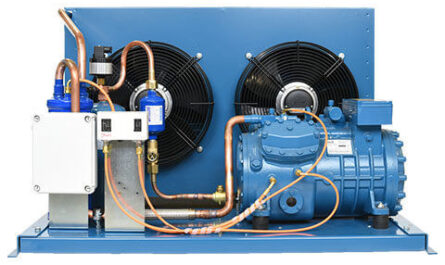Material handling robots are specialized industrial robots designed to perform various tasks related to transporting, moving, loading and unloading material and parts within a production facility or warehouse. Some common types of material handling robots includes palletizing robots, depalletizing robots, pick and place robots, carton erectors and load handlers. These robots are equipped with technologies like vision guidance systems, force sensors, articulating grippers and variable speed drives to safely manipulate workpieces and packages.
Applications of Material Handling Robotics
Material Handling Robotics are widely used in automotive, electronics, food and beverage, metal fabrication and other manufacturing industries for tasks like parts transfer, packaging, palletizing, kitting and transportation. Some of the key applications are:
– Automated Guided Vehicles (AGVs): AGVs are driverless vehicles used to transport units of load between different workstations. Equipped with navigation and collision avoidance systems, AGVs automate intra-logistics processes.
– Robotic Arm Carton Erecting: These robots use articulating robotic arms equipped with suction cups or grippers to erect flat carton boxes at high speed on the packaging line.
– Robotic Palletizing: Robotic palletizers stack packaged products onto pallets in predefined patterns. They integrate technologies like vision guidance and force sensors for precise stacking.
– Depalletizing: Depalletizing robots removed stacked products from pallets and feed them to the next process like sorting or packaging.
– Pick and Place: Pick and place robots are commonly used in electronics factories to handle small components with precise movements and placement within assembly lines.
Benefits of Using Material Handling Robotics
The key benefits that drive the increased adoption of material handling robots in manufacturing include:
Increased Productivity: Robots can work 24/7 without breaks and handle heavy payloads easily. This significantly boosts production output per hour.
Improved Safety: Robots are capable of handling hazardous, dangerous and ergonomically challenging material handling tasks that humans otherwise have to perform. This enhances workplace safety.
Consistent Quality: Being machines, robots offer precise, repetitive and consistent movements resulting in higher quality packaging, palletizing and assembly with minimal defects compared to humans.
Lower Operating Costs: While initial investments might be high, but robots eliminate expenses associated with hiring and training human staff over long term. Their maintenance costs are also predictable.
Automated Processes: Robots allow full automation of labour intensive processes like kitting, storage and retrieval resulting in minimal human intervention and errors. This leads to increased efficiency.
Flexibility: Robotic systems can be reconfigured and reprogrammed easily to support production requirement changes with minimal downtime compared to dedicated automation machinery.
Challenges in Implementing Material Handling Robotics
While material handling robotics deliver significant benefits, their implementation also faces certain adoption challenges:
High Capital Cost: Robotic systems typically have high upfront capital expenditures for equipment, programming, installation and system integration which can deter small to medium manufacturers.
Skills Shortage: Lack of skilled robotics engineers and programmers is a major roadblock for scaling robotic automation everywhere.
Change Management: Switching from manual to robotic processes requires extensive change management efforts for employees to adapt to new workflows. Resistance to change is common.
Limited Payback Period: The payback period for investing in robotic material handling systems usually ranges from 18-36 months based on industries. Management support is essential to see long term returns.
System Downtime: Unplanned robot or component failures can bring production lines to a halt until issues are resolved, impacting just-in-time manufacturing environments.
Safety Standards: Strict workplace safety regulations and standards exist for operating collaborative robots alongside humans to prevent injuries which require fulfilling.
Future Outlook
Technological advancements are continuously making material handling robotics more affordable, flexible, intelligent and collaborative. Going forward, the adoption of robotic solutions for logistics and manufacturing is expected to grow significantly for the following reasons:
– Robotics-as-a-Service (RaaS) business models are emerging which eliminate large upfront capital costs and switch costs to operational expenditures. This will improve accessibility for SMEs.
– Collaborative robots or cobots are getting smaller, safer and easier to program hence suitable for close human-robot collaboration without safety cages.
– Artificial intelligence, machine learning, computer vision and sensor fusion is enhancing the intelligence, autonomy, flexibility and decision making of material handling robots.
– Development of robotic platforms that seamlessly integrate with Industry 4.0 architectures like cloud robotics, digital twins, analytics for remote monitoring and predictive maintenance will take off strongly.
– Governments across countries are supporting research on emerging technologies and offering subsidies for factory automation and robot adoption to revive manufacturing sectors amid shortage of human workforce.
– Robotics skills will become mainstream as educational institutes incorporate robotics training in more disciplines and degrees will address talent crunch to some extent in future.
Material handling robotics revolution is paving the way for autonomous material handling and smart logistics. More factories will leverage robotics and advanced technologies to drive flexibility, traceability and resilience in their operations. This will be a big productivity and employment booster for priority sectors in the post pandemic era.




